Compression boots quick picks
Hospitals have long used compression boots on bedridden patients to improve circulation and help prevent blood clots. In recent years, a number of companies have introduced at-home versions for their potential to relieve stress, reduce aches and pains after a hard workout and recover faster after exercise.
To get the skinny on how well they work and what makes a good compression boot, we talked to an osteopath, an MD, an exercise physiologist and a personal trainer. “Several comprehensive analyses pretty consistently show that boots reduce soreness and pain, not an amazing amount but a statistically significant amount,” says Ben Gordon, Ph.D., an assistant professor of applied physiology and kinesiology at the University of Florida.
Although they look somewhat like boots, these devices are actually sleeves that slide over your foot and up your calf, usually reaching past the knee. The inside of the sleeve contains small pockets or bladders and when the machine is turned on, a compressor — either internal or external — fills the pockets with air.
This inflation and deflation creates a massage-like effect that increases blood flow, flushes out lactate and other fluids and reduces inflammation and muscle tension. “Some studies show that in many cases a normal cool down would have similar effects, but the boots work best after a really intense workout,” says Dr. Sara Mateen, a podiatrist with Hackensack Meridian Medical Group.
A number of factors play into what makes a good compression boot, including the number of pockets or compartments, method inflation, ease of use and portability. “In general, the more control you have the better,” Gordon says. “If you can independently adjust the sequence, pressure, compartments the better.”
Beyond that, make sure the boots treat you like a tube of toothpaste, starting at the bottom and working their way up. “Sequential are best options because they mimic the way the body works,” Mateen says.
All the experts suggest that as with any device related to your health, consult a physician before using and stop if your legs are in pain or feel hot.
Looking to get in on the action? Whether you want to recover from running, working out or just a very tough day, here are the best compression boots you can buy right now.
Expert-favorite compression boots
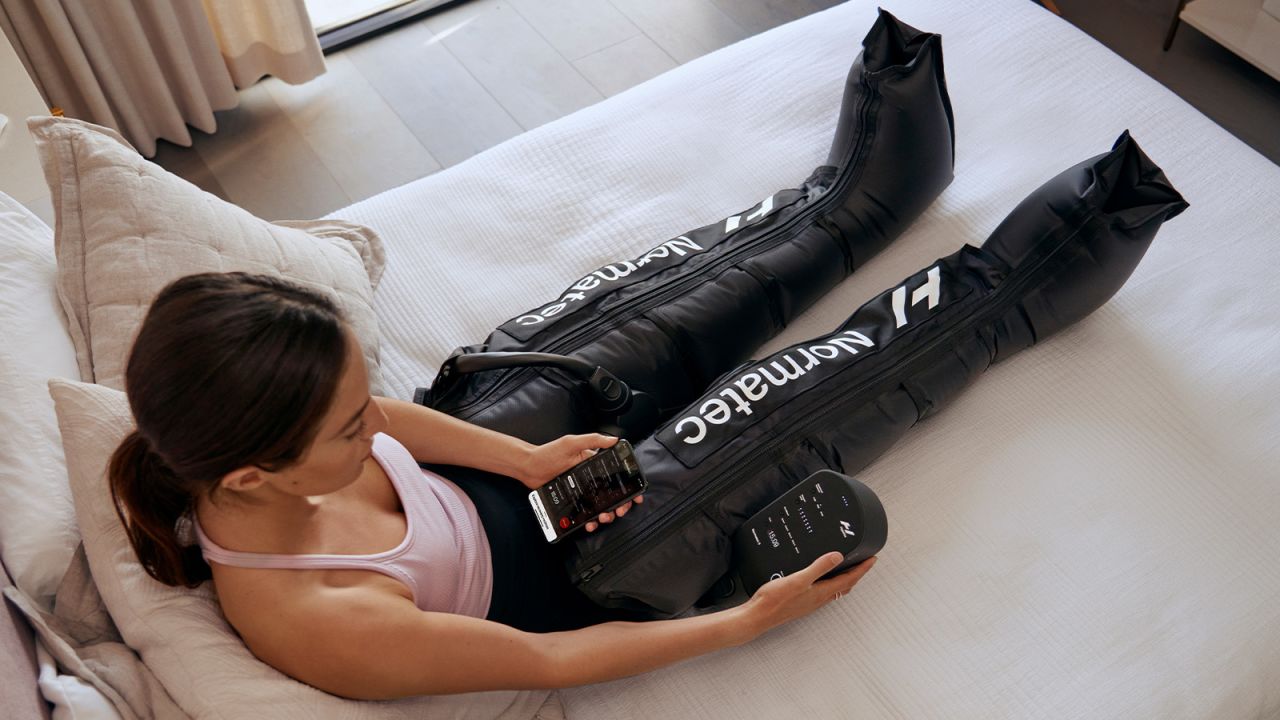
It’s pricey, but the Normatec employs a patented pulsing action through five overlapping zones with seven compression levels (from 30 to 100mmHg), which, the company says, mimics the body’s fluid movement system. The boots go thigh-high, fold up into a compact bundle and the hand-held controller is supplemented by a Bluetooth app that allows for additional customization.
Read our review
Compression boots for quicker recovery
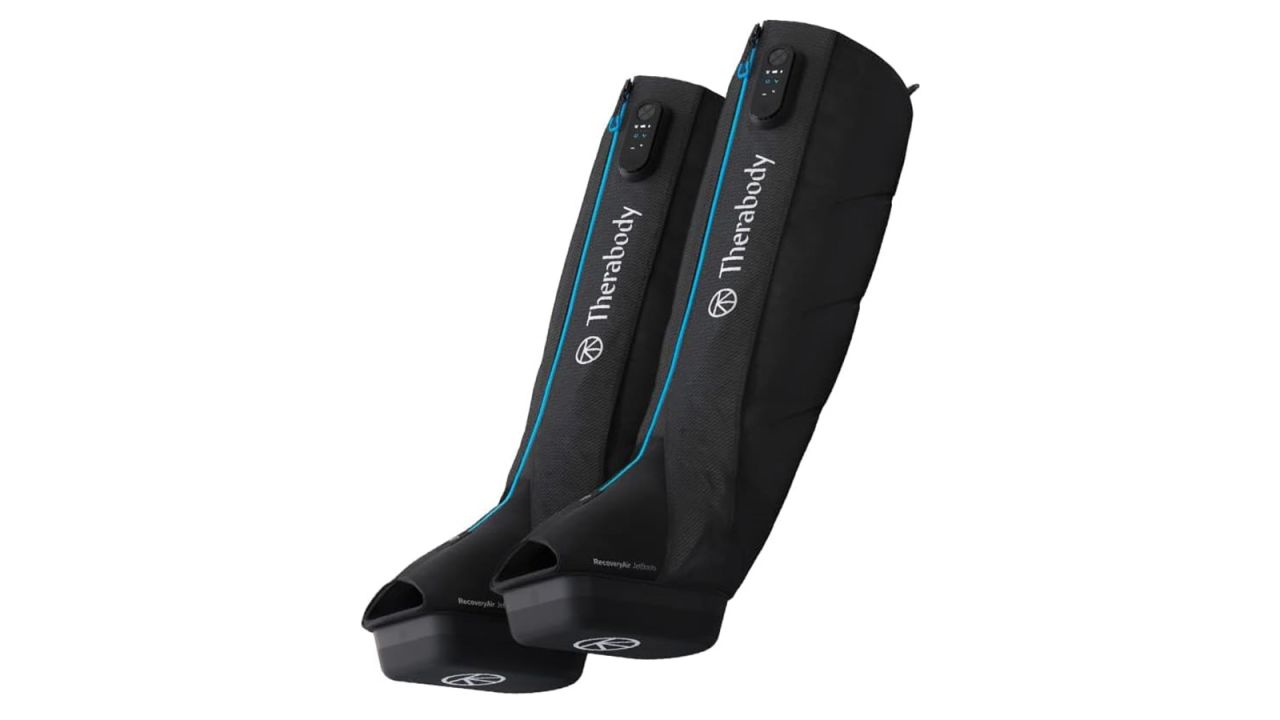
The JetBoots range in pressure from 25 to 100 mmHg and it runs through a complete cycle in a speedy 60 seconds, which the company says, leads to more cycles per session and faster recovery. That functional efficiency goes well with the product’s other notable feature: These boots are fully self-contained, with internal pumps and batteries. That means there are no tubes, hoses or wires or the hassles that go along with them.
Compression boots for beginners
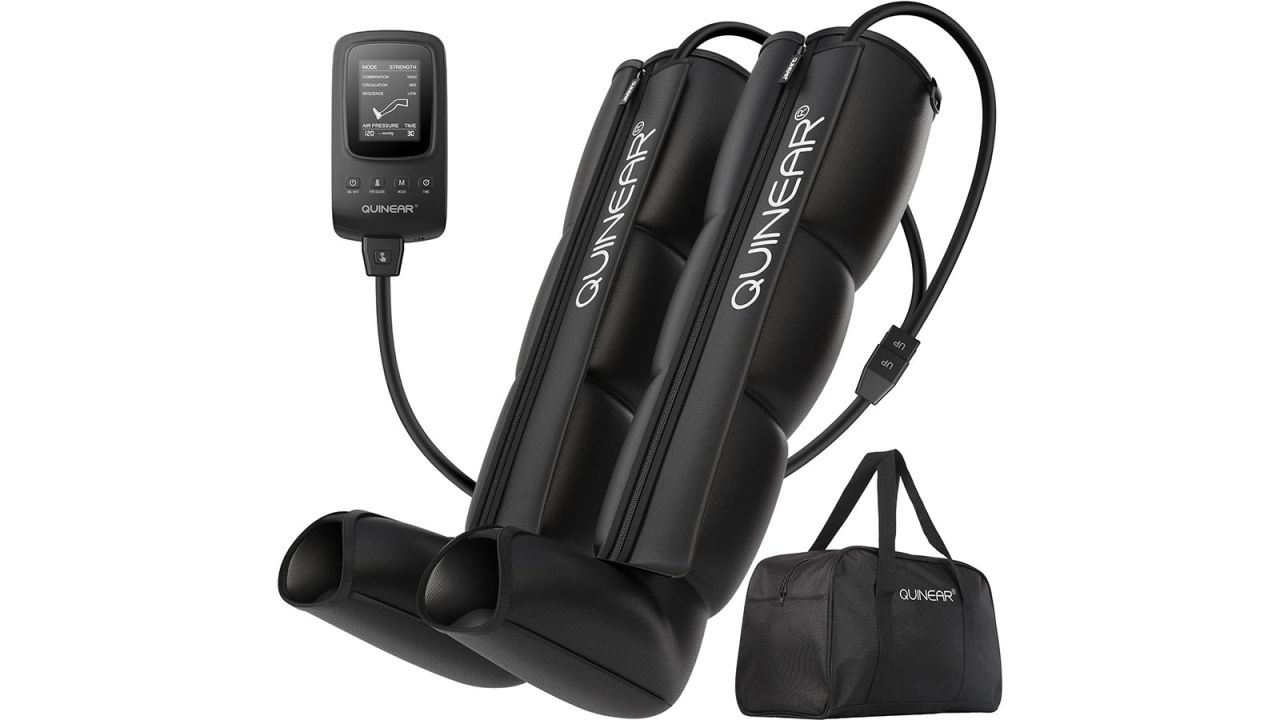
Quinear’s system is easy to use and comes at a more manageable price for someone who’s still figuring out how much they might like or need compression treatment. Despite the (relative) discount, it performs well. It even goes beyond compression, offering 10 preset programs that replicate the feel of a hands-on massage for an extra bit of stress relief.
Portable compression boots
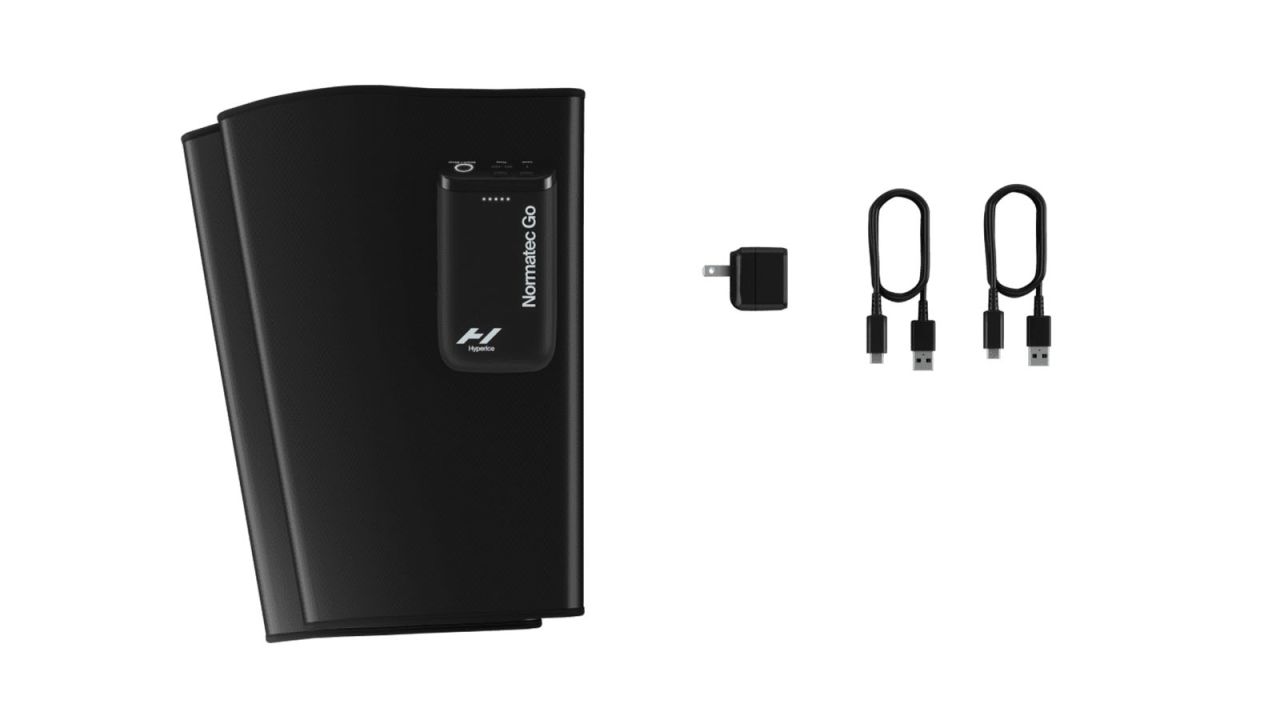
These self-contained calf sleeves are small and light enough (1.2 pounds each) to wear under pants while at the office or on a long flight — which is possible since they’re TSA approved as carry-on gear. Despite the size, they offer three overlapping compression zones, seven levels of pressure, customization through the app and three hours of battery life on a single charge.
Pro-level compression boots
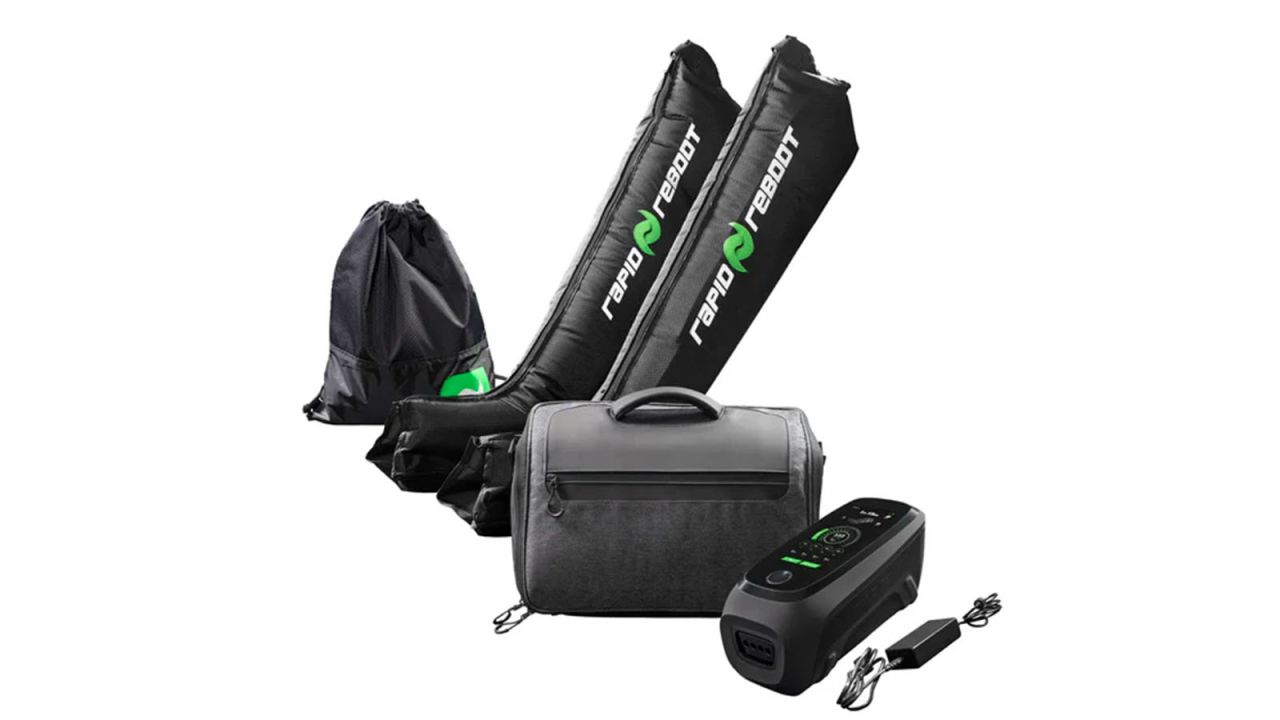
The Regen doesn’t do anything halfway, from its features to its size. The boots have 20 pressure settings, four compression patterns and three inflation speeds, all controlled by a hand-held touch screen. For even further customization, an app contains a series of programs designed for specific workouts. These big features come in a big package, with the entire kit weighing in at close to 10 pounds, but it does fold up into a case and comes with an international voltage converter.
High-pressure compression boots
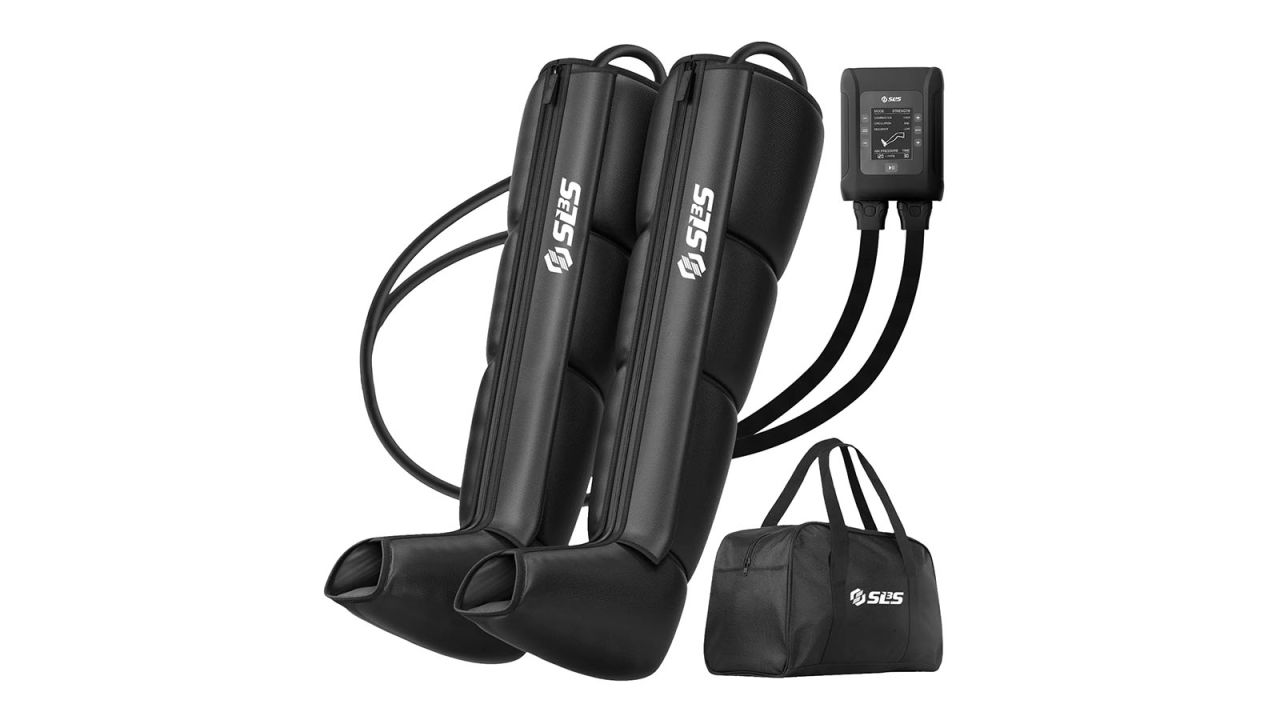
If you’re after something akin to a boa constrictor in a box, SLS3 offers the highest compression on the market: 250 mmHG, which it says provides faster recovery times. Probably best suited to hard-core athletes — marathoners and triathletes, etc. — these boots have four overlapping air chambers, six pre-set programs, an isolation mode and a remote control. Worth noting: Our experts thought 80 to 100 mmHG was the sweet spot for most users and caution that too much pressure can be harmful for some.
How often should you use compression boots?
The medical professionals we talked to suggest two to four times a week for 20 to 30 minutes at a time, although information on several manufacturer websites and user comments both suggested daily sessions were plausible and seemed to offer benefits.
Do compression boots help with swollen feet?
“The main benefits of compression boots are to remove swelling and help recovery,” says Dr. Mateen. They do so by “squeezing from the foot up the leg, replicating lymphatic drainage — it pushes out the waste and byproducts that accumulate.”
Do compression boots help with circulation?
Yes. This question has been well studied and based on the results doctors have used compression boots on patients with reduced mobility since the 1950s because they increase circulation and reduce the chance of blood clots.





